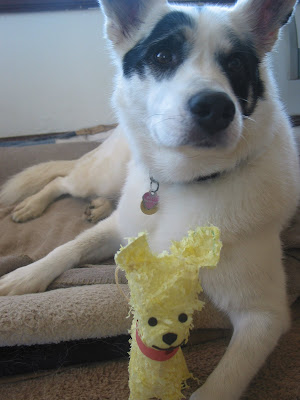
Finally, blogeritos and blogerinas! After a cold Summer seems like we have some sunshine in San Francisco. Like I always say, warm weather reminds me so much of
Tapachula, in Chiapas. I lived in Tapachula for only a year, but I used to visit often way before hurricane Stan destroyed the Soconusco region in the Southern most region of Mexico.
Tapachula's cuisine is very alluring, mixing Mayan and Spanish traditions, with some touches of African, Chinese and Japanese influences. The cuisine is not what folks usually think of as "Mexican Food" north of the border. It includes exotic local vegetables and fruits, savory tamales and unusual seafood and game (wild boar, iguanas, round water crustaceans called
chiquirines, and turtles).

Tapachula is sweltering hot! Hence the tradition of cooling and nourishing drinks all over the coast of Chiapas. This is a recipe to prepare a refreshing, milky
Horchata de Coco. To prepare it, you'll need the following ingredients:
- A fresh coconut
- A dry coconut
- One cup of rice
- One cup of slivered almonds
- A stick of cinnamon
- Lemon peel
- A vanilla bean
- Sugar, or agave nectar to taste
Start by soaking the rice, almonds and Cinnamon overnight in six cups of water. The next day, you'll be ready to start adding the flavoring ingredients.

Split the vanilla bean in two. Using a dull knife, scrape the inside part as shown in the picture. Add some lemon peel as well to your previously soaked ingredients.

Add all your ingredients to a pot and bring to a boil. Boil only for one minute so the rice has softened a bit but it is not mushy. If the rice cooks and it gets very soft it will change the texture of the rice and the flavor of the horchata.

Let the rice mixture cool. In the mean time, prepare some coconut milk by combining the water of a fresh young coconut and the fleshy white part of a dry coconut. You can open the young coconut with a very sharp knife or a cleaver. You can also use the thin, gel like coconut to flavor your drink.

Check out my instructions on how to split a dry coconut on my previous post - Fear, gifts and Sacrifice:
When the Coconut Cracks
Combine the coconut water, the coconut flesh and the young coconut gel using a blender. You now have coconut milk ready to use!

Process the rice mixture in the blender as well, in small batches and strain*. Add about four more cups of water, the coconut milk and sweeten to taste. That's it - serve very cold!
*Note, according to your taste, you may need to strain the horchata again after you add the coconut milk.
 I created this mural and adjacent window installation for Galeria de la Raza. Read about the inspiration for this digital mural here. The staff of the gallery work hard to get the mural up, even after days of non stop rain! The mural went up not only to celebrate the holidays - but it also coincided with the winter solstice, and during a recent lunar eclipse. I think it was very appropriate - for many ancient cultures in the Americas, the deer was a sacred animal in charge of bringing back the sun. I wish happy holidays to everyone, warmth, y mucha felicidad!
I created this mural and adjacent window installation for Galeria de la Raza. Read about the inspiration for this digital mural here. The staff of the gallery work hard to get the mural up, even after days of non stop rain! The mural went up not only to celebrate the holidays - but it also coincided with the winter solstice, and during a recent lunar eclipse. I think it was very appropriate - for many ancient cultures in the Americas, the deer was a sacred animal in charge of bringing back the sun. I wish happy holidays to everyone, warmth, y mucha felicidad! 


















































